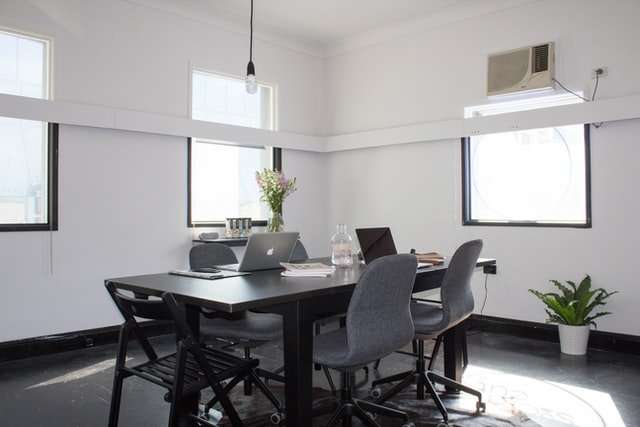Here is a collection of some of the best examples of interior design and decorating.
The key to creating an artistic home is to not only have individual pieces of art, but to also have enough art throughout the house so that the house itself becomes a work of art. The best way to do this is to use different types of art, such as paintings, sculptures, photography and prints. You can then use color to tie all of your artistic pieces together. For example, if you have a red sculpture in one room, then use other red things in other rooms and make sure there are no other colors present in those rooms. There are many ways to create an artistic home; this blog showcases just a few examples.
Art and design has become a part of many people’s lives. It is no longer limited to interior design and architecture, but has been expanded to many new areas. Although there is an increasing number of artists and designers in the field, it is still considered a difficult job to pursue. Even with the internet making information easier to access, there appears to be less time devoted to learning this skill.
But not everyone understands the concepts associated with art and design. Those who are interested in their home or improving it often have no idea where they should begin. Learning how to create an artistic home is possible, so if you want one you should know how to go about it. Here is some great advice on starting your own creative home
For those who are planing to buy a new home and have a small budget, it can be hard to create an artistic look in their own house. One of the best ways to save money while still having a great looking home is to get some ideas from others that have already figured out how to make their homes look excellent.
Get the Look: the Most Popular Color Schemes
The color palette is an important element of any design. There are many different color schemes that you can choose. Some of them will help you achieve a sophisticated look, while others will give your home an elegant touch.
The main thing to remember when choosing a color scheme is that all colors should be used in moderation and never too intense or overwhelming. This will ensure that your home looks tasteful and not gaudy or kitschy. Here are some of the most popular color schemes.
To make your home look cozy and welcoming, use warm, soft colors such as pastels and light shades of brown, yellow, orange and red. These colors will help you achieve an airy feel in your home, making it seem spacious and bright. If you live in a warm climate, springtime is the right time for decorating like this since sunlight will naturally bring these colors into
Art and design, while they may overlap in some cases, can be quite different. Art is a thing of beauty, an expression of emotion or ideas or feelings that appeals to the senses. Design is a thing of function, a way of organizing space or objects for efficiency or aesthetics.
Truly, both art and design can have the same goal in mind: to create something pleasing to look at and touch; however, the process of creation is what makes them different. Both art and design are effective forms of expression and communication, but they achieve this end through different means.
Description:The best place to start decorating your home may be the walls. Paint is one of the most affordable ways to give your living space a new look, so it’s a good idea to experiment with different colors before settling on one.*
Tone:enthusiastic
A brilliant way to start thinking about the kinds of things you will want to include in your art and design portfolio is to think about what kind of work you would like to have a part in creating. The best way to do this is by visiting galleries or museums and seeing what inspires you. You don’t need to set out with any “rules” or “guidelines” for what you are looking for; simply take in the images and let them influence your thoughts and feelings.
In fact, visit various galleries or museums over a period of time, and let the work that leaves a lasting impression on you inspire you more than the stuff that doesn’t. It’s natural for your tastes to change over time, and an artist who can regularly inspire himself can be more successful than one who waits for someone else to set the standards for him.
When you’re visiting art galleries and museums, don’t just look at the artwork! Pay attention to how it’s displayed too. Notice how it’s lit, where it’s placed on the wall, how large it is, etc. Even if some aspects of a piece are less than ideal, pay attention to what is working well; these are concepts that can be improved upon in your own work when appropriate. Think about which elements
One of the problems with discussing art is that we don’t all have the same definition of it. For some people that is a big problem, for others, not so much.
One of the best ways to get an idea about a piece of art is to try to define it in your mind before you go and see it. You won’t always be able to put a finger on what you are trying to find when you look at a painting or sculpture or photograph, but if you can get just one idea out of it, that might be enough.
I tend to think of art as something that causes you to ask questions beyond what it is you are looking at. It could cause you to ask questions about life, love, beauty, relationships, even as general as happiness. All this while looking at something that appears beautiful or interesting.*
The truly creative mind in any field is no more than this: a living mirror.
It collects all the materials of the arts around it, and reflects them back in a lively way. It adds to these materials, too, both through inspiration and through hard work. But it never snatches from another field something which belongs to that field.
The truly creative artist never sees, in his mind’s eye, his own face. He sees only faces. He sees only what he is painting.
When a man looks at a woman, he does not see her features as isolated elements. He sees her face as one whole, with all its lines blending into one another. So should the creative mind see things in their wholeness–and always as an abstract pattern of shapes and colors, not as literal representations of things or details.
This is where I get back to color theory… Color theory is basically the study of how we perceive color; different colors have different effects on us depending on where they are used (in the background vs foreground, etc). So you can use color theory to make your art more dynamic and interesting by using it correctly!
Using color correctly is important because it makes your art look more natural and pleasing to look at. In order to



